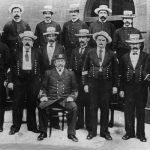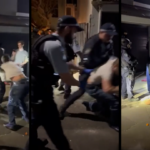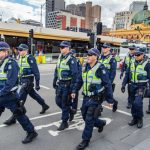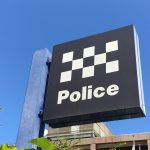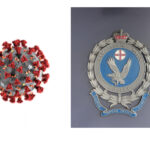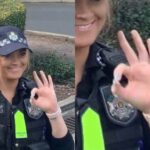Western Sydney Riot: Why Would a Community Be Mistrustful of NSW Police?
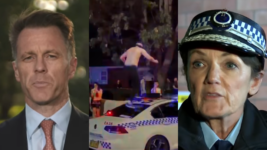
Following a knife attack on globally renowned Bishop Mar Mari Emmanuel of the Assyrian Orthodox Christ the Good Shepherd Church in the western Sydney suburb of Wakeley on Monday, a crowd of his followers began arriving, understandably upset by the livestreamed attack, and a riot ensued.
Footage shows people gathered out front of the church calling for the 16-year-old Muslim boy inside who lunged at the priest with a knife during mass on the evening of 15 April, and when NSW police and medics turned up, the crowd turned on them, with dozens of police vehicles being damaged.
“The crowd surged… from 50 to maybe 500,” said NSW police commissioner Karen Webb following the riot, which transpired over the course of about three hours. “Police officers were doing their job, and they were attacked.”
“This doesn’t happen in Sydney,” the top cop told reporters on Monday night.
NSW premier Chris Minns then told 7.30 on Tuesday that it was difficult to put himself “in the mindset of someone who would choose to attack a NSW police officer”, but it would likely too be hard for him to imagine living in a society where law enforcement was habitually suspicious of him.
Webb’s disowning of a riot that happened in her city, in saying that it could not happen here, is symptomatic of the problem.
And an easy way for the premier to begin to consider the seemingly inexplicable reason why rioters might have acted aggressively towards police, he might like to cast his mind back to the dual city lockdown that his predecessor Berejiklian presided over, to gain a glimmer as to why it occurred.
Us and them
Webb announced she’d determined that the nonfatal stabbing of the priest was a terrorist attack, and this led to claims that she’s reignited the terrorist is a Muslim trope in the community, especially when a white man killed six people in Bondi two days prior and that was labelled a crime.
But the commissioner with a penchant for quoting Taylor Swift didn’t simply cast the city back to the war on terror mindset, but she then pointed to a group of Assyrian people angered over a violent attack aimed a revered figure and she labelled it as other or foreign to the rest of Sydney.
Australian Federal Police commissioner Reece Kershaw did the same at a Tuesday presser with the prime minister, as he went as far as to refer to the “community who attacked police” as acting in a “really un-Australian” way during the riot the night prior.
So, rather than address those who did riot as a part of the community that acted out in direct response to another extreme act, both heads of police condemned its behaviour as other, which in 2024 multicultural Sydney is not only an antiquated idea but it’s a bit of a stretch.
And this holding up of the Assyrian group as acting in an incomprehensible way in a moment of crisis, also tends to trigger the “of Middle Eastern appearance” trope, which is the criminalised lens that migrant communities hailing from that part of the globe, have been subject to since the 1990s.
So, to single out a part of the community and deem them “not of us”, both old white cops have completely forgotten that in 2005, there was nothing more Australian than to get down to Cronulla Beach – wrapped in a Union Jack and sporting a southern cross tattoo – to riot hard.
Tending to the flock
Following the top cops having condemned a part of the community as acting un-Australian, and labelling a Muslim boy, who obviously suffers from mental health issues, as a lone wolf terrorist, ever reverent premier Minns then appeared on the ABC to wax lyrical about social cohesion.
“Obviously, in a city as big as Sydney… when you’ve got a multicultural, multifaith community, it is hard to get 100 percent of those communities and those members… doing the right thing,” said the leader of NSW Labor, a party that lost its safe western Sydney federal seat of Fowler in 2022.
“What I would say is the vast, vast majority of people of faith in NSW not only would find that kind of violence deplorable but would never ever participate in it,” said the preacher – sorry, the premier. “In fact, it is completely antithetical to their religious beliefs.”
But it’s not as all clear cut as Minns would have it. The overpolicing of Middle Eastern communities in western Sydney began decades ago and it’s a key reason for distrust in law enforcement. And then there was the stricter lockdown the Berejiklian government imposed on that part of town in 2021.
This happened when there was a spike in COVID cases in western Sydney in July that year, and the state imposed a set of stricter measures upon that region, which has one of the most diverse communities on the continent.
This included an initial 100 extra police officers on the street, restrictions on leaving the western Sydney area and eventually, sending in Australian Army troops.
Then Fairfield councillor and now federal independent member for Fowler, Dai Le told Sydney Criminal Lawyers during the dual lockdown that the state government was “profiling” her entire community, which had been targeted by police and the media many times in the past.
“Over the decades, there has been a tense relationship with police,” Le explained three years ago. “I know NSW police has worked hard over the last few years to try and breach that. But the decision to have a very public show of force… didn’t sit well, especially with people living here.”
A matter of trust
Western and southwestern Sydney communities have been subjected to enhanced and biased NSW police attention over many decades. And any progress away from those positions over subsequent years was brought to a stark end with COVID onset.
The Berejiklian government sent the extra police officers into three southwestern local government areas for a high visibility policing operation comprised of mounted police, the dog unit, highway patrol cops, PolAir, traffic police and general duties officers.
This show of force was imposed to send fear into the population using the threat of the NSW police, and later, even the Australian Army, to ensure it abided by the lockdown. This action basically criminalised entire communities, with the paternalistic gesture, showing a clear lack of trust.
And while faith-leader-centric Minns and “haters gonna hate” Webb feign disbelief that a display akin to the Cronulla Riots, if not a bit tempered in comparison, could emanate from anywhere in Sydney and not hazard a guess as to why it might transpire, it’s crystal clear to many on the ground.
Indeed, the lack of trust in the authority of the NSW police, which the stomping in of law enforcement vehicle windshields during the riot displayed, is that same lack of trust that NSW authorities showed those communities back when the going got tough round COVID times.


